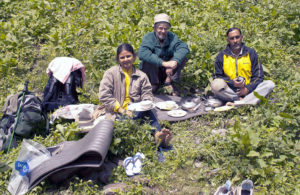Kaj Halberg - writer & photographer
Travels ‐ Landscapes ‐ Wildlife ‐ People
Himalayan flora
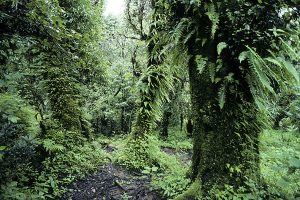
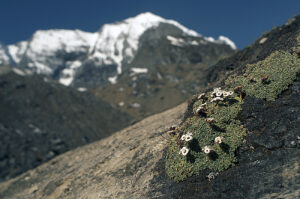
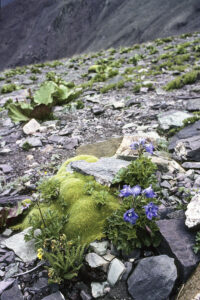
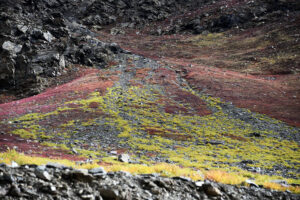
The borders of the Himalaya are not well defined. To the northwest, the Karakoram Mountains (which some authorities consider a part of the Himalaya, others do not) merge into the Hindu Kush and Pamir Mountains. To the north and northeast, several mountain chains in Ladakh, Tibet, and China are a continuation of the Himalaya proper.
As a result of the great span in altitude and precipitation – besides various other factors such as micro-climate and soil composition – flora and fauna of the Himalaya are indeed diverse. In these mountains, two bio-geographical regions meet. In most areas, flora and fauna from the Indo-Malayan Region, which includes the Indian Subcontinent and Southeast Asia, dominate, but in northern Pakistan, Kashmir, Ladakh, and in areas of far northern Nepal and Bhutan at altitudes above c. 3,500 m, there is a large element of species from the Palaearctic Region, which includes Central and West Asia.
The Himalaya is home to an overwhelming abundance of plant species. In Nepal alone, c. 6,500 species of seed plants have been found, and the number in the entire mountain range exceeds 10,000, of which about 4,000 are endemic to the area. To this number, add hundreds of species of ferns, clubmosses, mosses, and lichens.
When the monsoon has passed over the Himalaya from the south, almost all its humidity has already fallen as rain. Thus, the Tibetan Plateau north of the mountains receives very little rainfall. In many places, the annual mean precipitation is less than 100 mm, most of which falls as snow in the winter. For this reason, the major part of the landscape is dry and rather barren, with lush and green areas mainly found along rivers and around the numerous lakes of the region.
My encounters with the rich and varied plant life in a number of Himalayan locations are related on the page Plant hunting in the Himalaya.
Because of the huge number of pictures, I have divided this page into three sub-pages:
1: Acanthaceae to Euphorbiaceae
2: Fabaceae to Primulaceae
3: Ranunculaceae to Zygophyllaceae, and ferns, lycopods, and lichens.
I am aware that lichens, strictly speaking, are not plants, but I include them anyway, as most people regard them as plants.
The websites wikipedia.org, Flora of China (efloras.org/flora_page.aspx?flora_id=2), Flora of Pakistan (efloras.org/flora_page.aspx?flora_id=5), and powo.science.kew.org have also been of great value.
The vast majority of the information on usage of plants has been borrowed from Narayan Manandhar’s delightful book Plants and People of Nepal (Timber Press, 2002). My sincerest thanks to Mr. Manandhar. Tibetan Medicinal Plants, by T.J. Tsarong, published by Tibetan Medical Publications, India, 1994, has also been valuable.
Regarding the etymology, I have relied on the website Wiktionary, and on J. Corneliuson, Växternas namn. Vetenskapliga växtnamns etymologi. Språkligt ursprung och kulturell bakgrund, published by Wahlström & Widstrand, 1997 (in Swedish).
I am also indebted to my friend Ajai Saxena, who has provided more than two dozen pictures. Together, we have made several botanical trips in the Himalaya, sometimes accompanied by Ajai’s wife Madhu.
